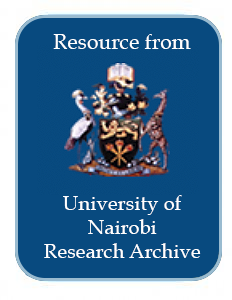Resource information
Climate change impacts livelihoods adversely in dry-lands of Northern Kenya in terms of longer and harsher droughts, shorter and intense precipitation and floods. Climate change interlocks with peoples life-worlds differently for different reasons. Understanding the foregoing can inform and make policy more relevant. What are the Samburu peoples discernment of climate change and how have they confronted it? The paper examines the Samburu perspectives of climate change and the resulting coping, adaptation mechanisms and practice, and their prospects. The paper is based on a case study of Samburu East District through a survey, life histories and focus group discussions. The Samburu indicate that climate change leads to soil erosion, some fauna species extinction, water and pasture scarcity and intensified conflicts over resources. This trend impacts negatively on their livelihoods due to food shortage, human and livestock diseases, social and family instability. Nomadic herding increased their vulnerability due to conflicts over resources and livestock losses to cattle rustling. Diversified livelihoods center on adaptive drought tolerant species like camels and cropping which turns out more precarious. Although it conjures up a helter-skelter livelihood imagery, the Samburu display resiliency and order in confronting climate change and policy support will further buttress their responses.


